Circular Economy: How Can the Highest Possible Purity of Aluminium be Achieved?
© Shutterstock
Bar ohne Namen
Entschlossen verweigert sich Savage, der Bar einen Namen zu geben. Stattdessen sind drei klassische Design-Symbole das Logo der Trinkstätte in Dalston: ein gelbes Quadrat, ein rotes Viereck, ein blauer Kreis. Am meisten wurmt den sympathischen Franzosen dabei, dass es kein Gelbes-Dreieck-Emoji gibt. Das erschwert auf komische Weise die Kommunikation. Der Instagram Account lautet: a_bar_with_shapes-for_a_name und anderenorts tauchen die Begriffe ‘Savage Bar’ oder eben ‚Bauhaus Bar‘ auf.
Für den BCB bringt Savage nun sein Barkonzept mit und mixt für uns mit Unterstützung von Russian Standard Vodka an der perfekten Bar dazu.
More and more companies want to save resources and, among other things, rely on the use of secondary raw materials. In addition to a smaller carbon footprint, security of supply can also be increased in this way. But in order to be able to conserve resources in the long term, it must be possible to reuse raw materials as often as possible. This requires recycling material flows of the highest and most consistent quality possible.
As a supplier of modern sensor and magnet technology, STEINERT is committed to supporting customers and partners worldwide on the path to an all-embracing Circular Economy – from the search for resources, their availability, recycling, sorting and conservation. The systems are based on X-ray transmission and are specifically designed for the separation of heavy and light metals in metal processing, which is why the company has been an important partner for metal recyclers, for example, ever since.
X-ray Transmission for High Purity
One way to permanently recycle resources is to use efficient sorting technologies. For example, the STEINERT XSS T with X-ray transmission (XRT) achieves unprecedentedly high purities when recycling aluminium – the detection of the sorting system is so precise that it can achieve an aluminium purity of 99.8 percent and thus produces the very high-quality material that is always in demand on the market. In addition, the metal can be kept in the cycle for a long time. The EVO 5.0 is the latest evolutionary stage, with automatic X-ray monitoring and automatic calibration of the X-ray sensors, ensuring consistently high detection and sorting quality without fluctuations.
In addition to heavy and light metal separation, the separation of wrought and cast aluminium is another essential application. This separation is particularly important for the marketability of the secondary raw material. The separation of native magnesium is also important for the quality of secondary aluminium. Since EVO 5.0, the system offers more differentiation criteria for particularly difficult sorting tasks such as magnesium detection with the help of the multilayer data evaluation. By separating free magnesium, the recycled aluminium produced can be used much more flexibly for the formular in the smelting furnace.
Partner in Crime for the Circular Economy
STEINERT puts a lot of emphasis on its partnerships, after all, the path to an all-encompassing Circular Economy requires trustworthy and strong cooperations. For example, a Danish company sources all its sorting solutions for non-ferrous metals from STEINERT, which produces around 4 truckloads of aluminium every day. According to the company, the decisive factor here is that the industry does not have to obtain its supplies directly from primary mining and its sustainability balance increases when it uses high-quality secondary raw materials. This saves up to 90 percent CO2.
A group of companies with a network of 178 recycling plants in Europe recycles more than 6 million tonnes of complex waste materials every year. In one of its recycling centres, 500,000 tonnes of complex materials are treated annually and 870,000 tonnes of emissions are saved. The company relies on STEINERT technologies for sorting. In contrast to the past, when scrap went to the Far East and was sorted by hand and it was not clear what would happen to the material, today technological developments in sorting make one of the biggest differences. Now the highest qualities can be ensured in their own country, using X-ray technology and the metal can be fed into the economy. The use of secondary raw materials saves a lot of CO2 – and sorting is one of the most important preliminary stages.
A specialist in aluminium recycling near Bergamo in northern Italy has decided to use STEINERT sorting technology, in particular dry density separation with X-ray transmission (XRT), to ensure the highest purity of aluminium production. The company produces up to 70,000 tonnes of high-quality secondary aluminium annually. The sorted aluminium is ready for the furnace and goes to the company's own aluminium foundry for further processing.
STEINERT LIBS Sorting Systems for more Purity
As an additional stage, some STEINERT customers rely on downstream LIBS sorting. Laser Induced Breakdown Spectroscopy can analyse in real time the aluminium content and components such as copper, magnesium or silicon that determine the type of aluminium alloy. This process enables the classification of different alloys and thus effective sorting, which makes it possible to use it directly in industry. The recovery of targeted alloy compositions reduces downcycling.
The demand for recycled aluminium is steadily increasing. In particular, the separation into alloys is both an opportunity and a challenge. By producing pure alloy qualities from recycled aluminium, the specific usability can be effectively increased. The path to closed material cycles is set.
